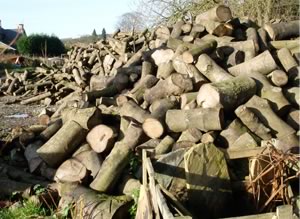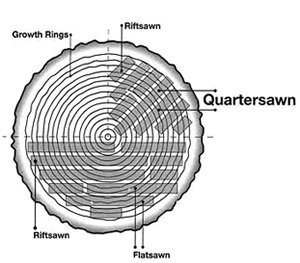![]()
Because almost all of our properties have been in continuous family ownership ever since they were built - many of which are hundreds of years old - we take a long term view when it comes to maintenance. This involves using materials that last and are appropriate to the age and condition of the building, and employing traditional skills and craftsmen.

Dipping Process
PAINTS
Holkham Linseed paint
For external wood and ironwork we use, wherever possible, linseed paint which nourishes the wood, is natural and organic, solvent free, breathable and longer lasting than modern petrochemical based paints. The main benefit of this system is that it reduces the frequency that our properties need to be re-painted. With modern paints we found that windows and external doors needed to be repainted within 5 years. With the linseed based paint used in combination with high quality timber, the first maintenance is required after approximately ten years, and then only with a single coat of linseed oil. This dramatically reduces our long term costs.
The Haddon Estate also does contract work for other estates, property owners and developers. We make and repair windows and doors and paint them using the linseed paint process.
For more information please contact Mike Elliott, Maintenance Manager on mjelliott@haddonestate.co.uk or 07801 457 223.
For more information about this system please visit the Holkham Linseed Paint website.
www.holkhamlinseedpaints.co.uk
Process
Aglaia paint
For internal paintwork at Haddon Hall we use Aglaia 100% natural paints which are fully breathable organic paints ideally suited for historic buildings which need to breathe naturally.


TIMBER
The Estate uses a huge amount of timber for restoring houses, making windows, furniture etc. Because we plan for the long term, we only use the highest quality wood. We use 100 year old Baltic Pine from Sweden; and ancient English quarter sawn oak, some of which we are offering for sale.
Softwood
For general building work, joists, windows etc we use 100 year old Baltic Pine from Sweden. This timber comes from naturally regenerating forests; and is a species which grows slowly, has narrow growth rings and few knots. This wood does not warp, is very strong and is wonderful to work with.
Hardwood
For specialist restoration work on Haddon Hall; various projects around the Estate; and for making furniture, we use English Oak. We have recently restarted a process of selectively felling a handful of Haddon oak to season over time. In the meantime we have bought and quarter sawn two magnificent butts of oak into 11” boards up to 181” wide which are ideal for furniture making; floorboards or paneling. We are offering some of this wonderful timber for sale.
Quarter sawn oak
This is oak has been sawn with the saw blade lined in parallel to the medullary rays. These are seen as fine pale coloured lines radiating from the centre of the circle of the cut log to the outside. They show on the face of the oak as pale coloured, even silvery, 'squiggles'. These rows of medullary cells bind the annual rings together. As a result, quarter sawn oak is much more dimensionally stable than flat sawn or tangentially sawn oak. It is also much more durable under heavy wear.
Firewood
We have noticed a growing demand for firewood as wood burning boilers and stoves are increasingly seen as an economical and environmentally friendly way to provide heat. We can supply high quality fully sustainable hardwood logs (from wind blown trees; forestry thinnings; and coppicing). Please contact Mike Elliott for further information.

Kiln on the Estate
LIME KILN AND MORTAR
All properties on the Estate are old, and it is our philosophy to maintain them using traditional techniques and materials. This is a practical strategy as we have found that modern materials in the long term cause problems for old buildings as they inhibit the dynamics of natural materials which need to breath. An example of this is modern cement based mortar used for pointing which is harder than the surrounding stone. This causes any moisture to be forced through the stonework thereby causing damage to the stone and damp in the building. As a result we have built our own lime kiln and fire limestone from a quarry on the Estate. Lime mortar allows the building to breathe properly, looks right as it is made from local stone, and also continually sets over time, moulding to the building and also absorbing carbon dioxide.